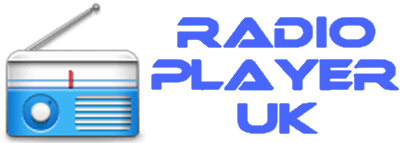Help and Information
Bitrates explained, and how radio stations use them.
A bitrate is the amount of data that the radio station streams to your device, normally measured in seconds. The higher the bitrate, the more data that is streamed from the radio station's servers to the recieving device.
Normally, higher bitrates mean that the audio is a lot sharper, with more detail. Typically, music stations, in particular classical and artistic stations, tend to use a higher bitrate to stream their audio (192 kbps+) becuase listeners appreciate the detail of the music. Talk stations don't need a lot of detail in their streams, so they tend to use between 32 - 64 kbps. This isn't a rule, though. The BBC use 128 kbps on most of their national radio stations, so BBC Radio 4 has the same quality stream as BBC Radio 1Xtra.
A good internet connection is essential for listening to high quality audio. As the bitrates get higher, more data is fed down to the listener's device, so there needs to be a reliable internet connection to cope with a high amount of data passing through. These days users don't need to worry so much when using a wired broadband connection, but those using mobile data need to consider if their connection is good enough to cope with the stream. Generally, here at Radio Player UK, we choose radio station streams that use 48 - 64 kbps (kilobits per second), as that's most user-friendly for mobile connections, and users of lower signal strength can still reliably listen to the radio with little or no interruptions / breaks in sound.
What are the coloured phone symbols next to the audio controls?
We're making it easier to understand what bitrates the station you're listening to is using, and to do this we've created a traffic light system, based on a typical mobile phone with a typical capped data plan. Listeners with unlimited data, high mobile signal or fixed broadband connections may not need to worry about them as much.
 When you see the green phone,
this means that the radio station uses a very low bit rate, so it's suitable for all devices and is economical for mobile data. Normally we put this on streams that
are around 32 kbps - 64 kbps.
When you see the green phone,
this means that the radio station uses a very low bit rate, so it's suitable for all devices and is economical for mobile data. Normally we put this on streams that
are around 32 kbps - 64 kbps.
 The amber coloured
phone is for radio streams that have a fairly high bit rate and should be monitored by users using a pretty basic fair usage policy. These stations also require a
fairly decent amount of phone signal, maybe not as good for travelling in a car with. However, the quality of the audio is better than a green phone station and is
normally better than most audio on a DAB Digital Radio. Normally we say these streams are between 96 kbps - 128 kbps.
The amber coloured
phone is for radio streams that have a fairly high bit rate and should be monitored by users using a pretty basic fair usage policy. These stations also require a
fairly decent amount of phone signal, maybe not as good for travelling in a car with. However, the quality of the audio is better than a green phone station and is
normally better than most audio on a DAB Digital Radio. Normally we say these streams are between 96 kbps - 128 kbps.
 The red phone represents
radio stations that have a really intensive bit rate, definately not ideal for low fair usage data limits. They also need a very good internet connection to run,
preferably HSDPA/HSUPA (H+), 4G, 5G and upwards. Home broadband users don't really need to worry, as long as they have an internet speed of 10 mbps+. These normally
have a great amount of quality and detail to the audio, HD standard and ideal for a decent home audio system. Normally we would say these streams have a bitrate of
192 kbps +.
The red phone represents
radio stations that have a really intensive bit rate, definately not ideal for low fair usage data limits. They also need a very good internet connection to run,
preferably HSDPA/HSUPA (H+), 4G, 5G and upwards. Home broadband users don't really need to worry, as long as they have an internet speed of 10 mbps+. These normally
have a great amount of quality and detail to the audio, HD standard and ideal for a decent home audio system. Normally we would say these streams have a bitrate of
192 kbps +.
Obviously we can't take responsibility if users run out of data while listening and incur extra charges, and the streams are subject to change. The traffic light system is only a guide, which should be used as such.

